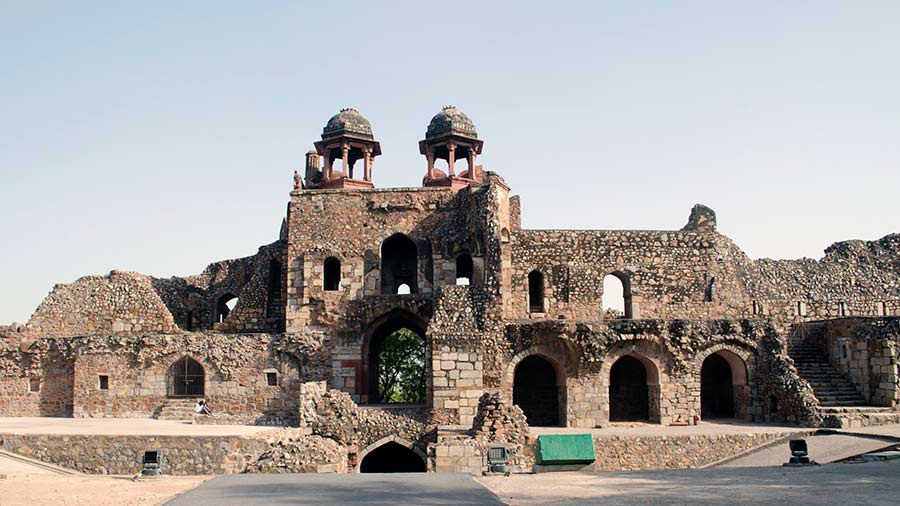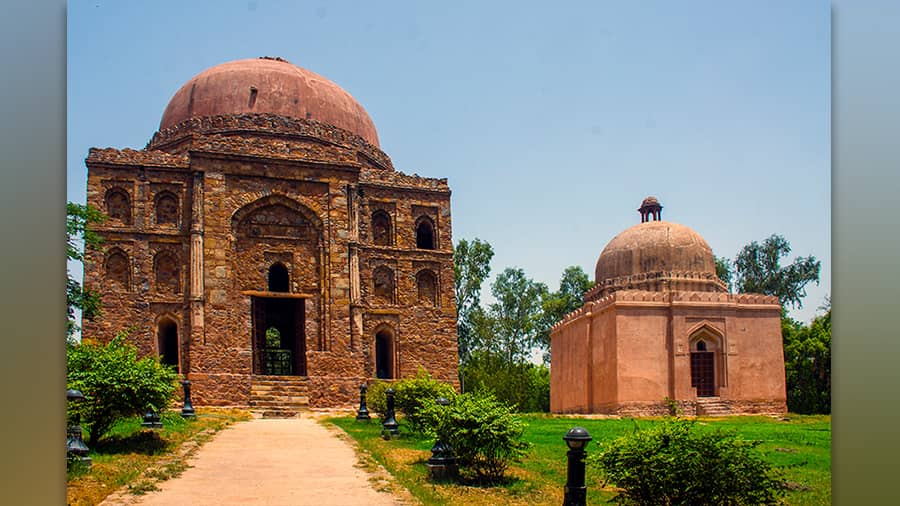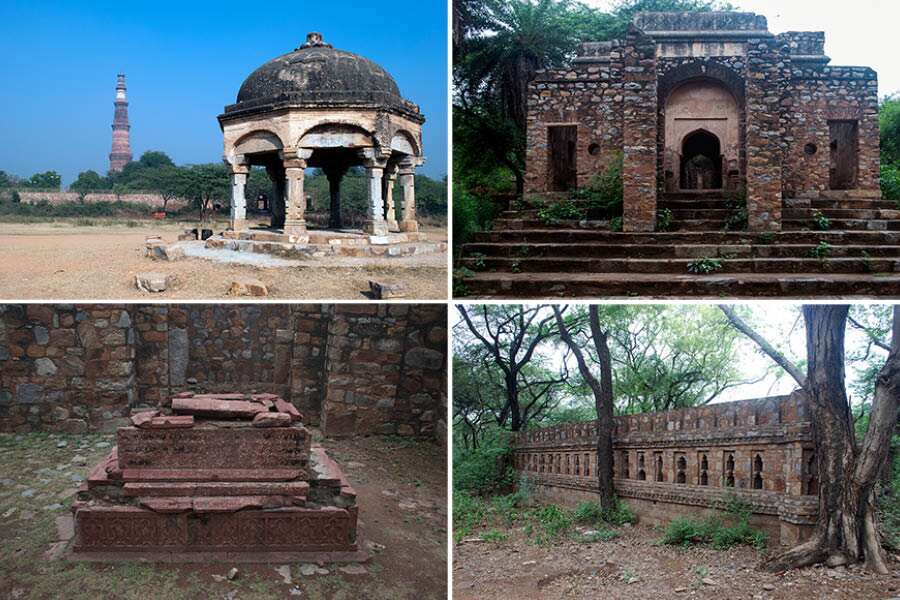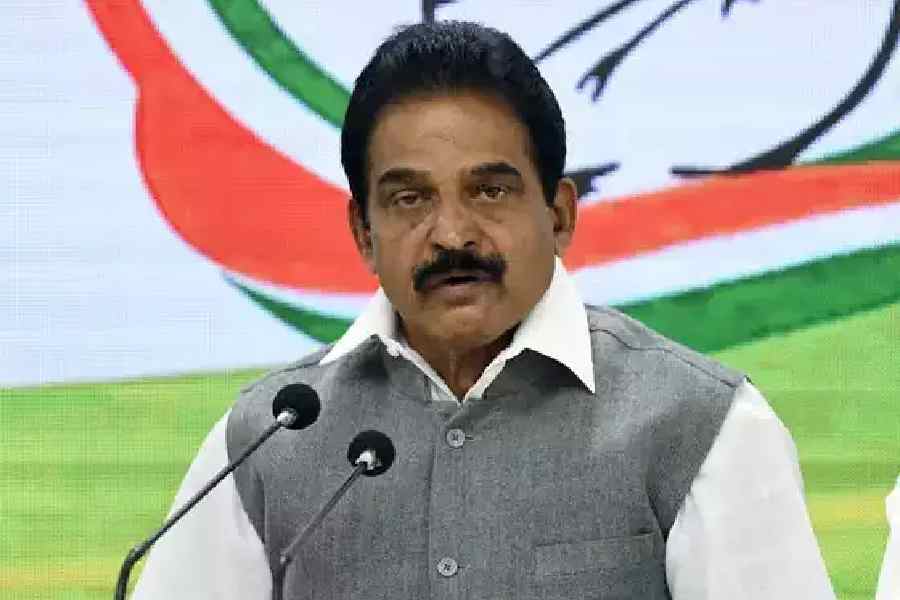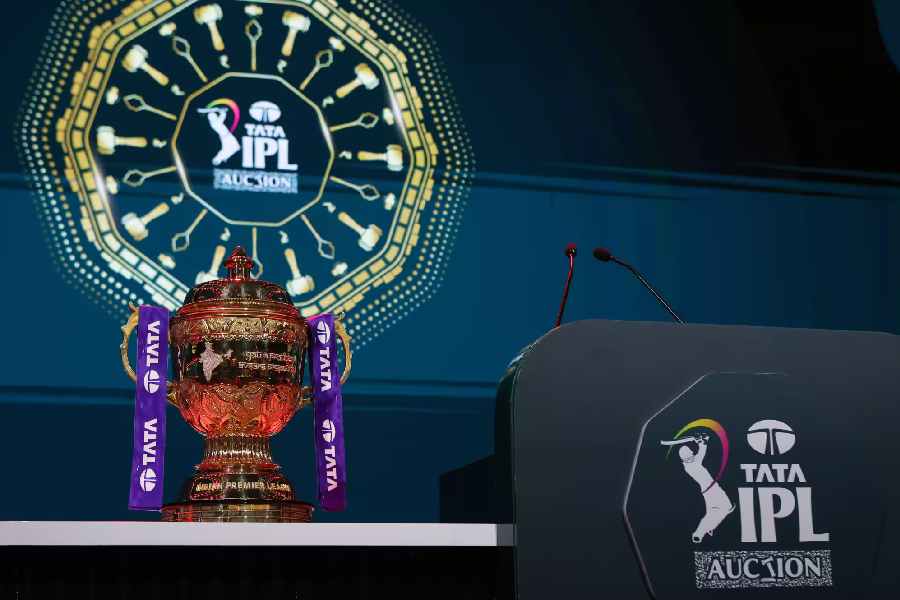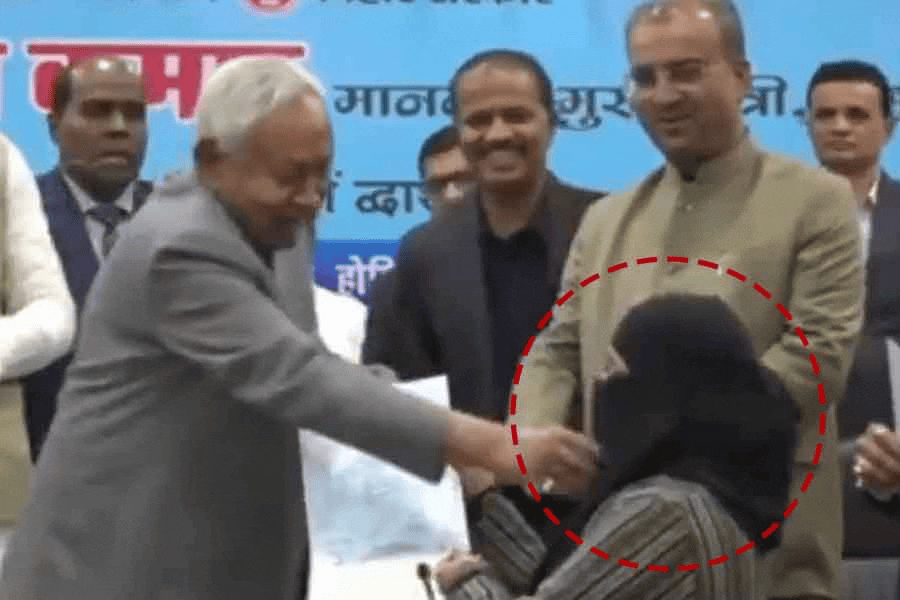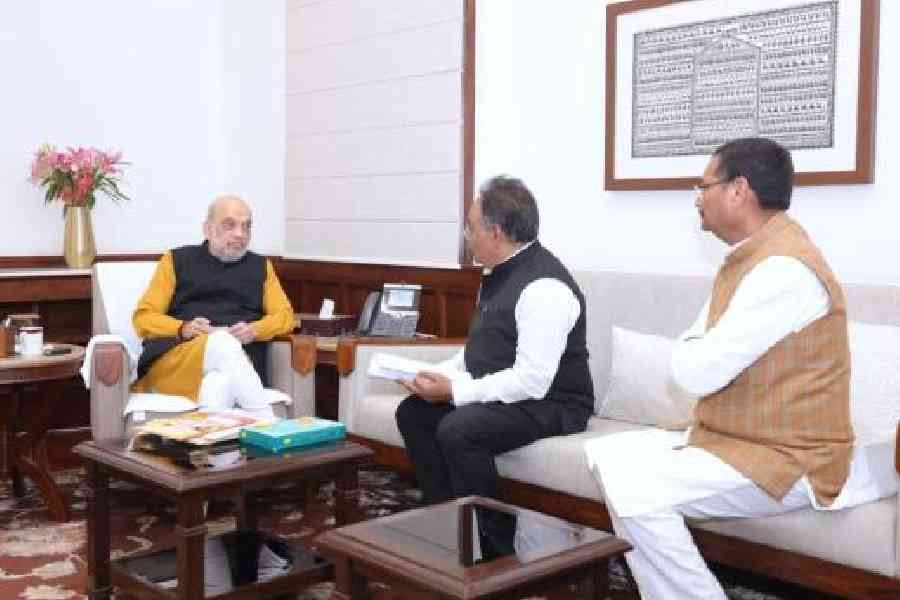On a traffic island on Bahadur Shah Zafar Marg, in front of Arun Jaitley Stadium (formerly known as Feroz Shah Kotla Stadium) stands a massive Mughal-era gateway. It is known as the Khooni Darwaza, literally meaning bloody gate, and lives up to its name with its history of bloodshed and killing.
Surrounded by newly planted trees that keeps it guarded from view from the main road, the 15.5-metre-tall two-storeyed structure is made of Delhi quartzite stone and is topped with battlements. Its windows and the archways have red sandstone ornamentation, and three different sets of stairways leading to different levels of the gateway. Thousands of people pass through this historical monument every day, possibly unaware of its violent past.
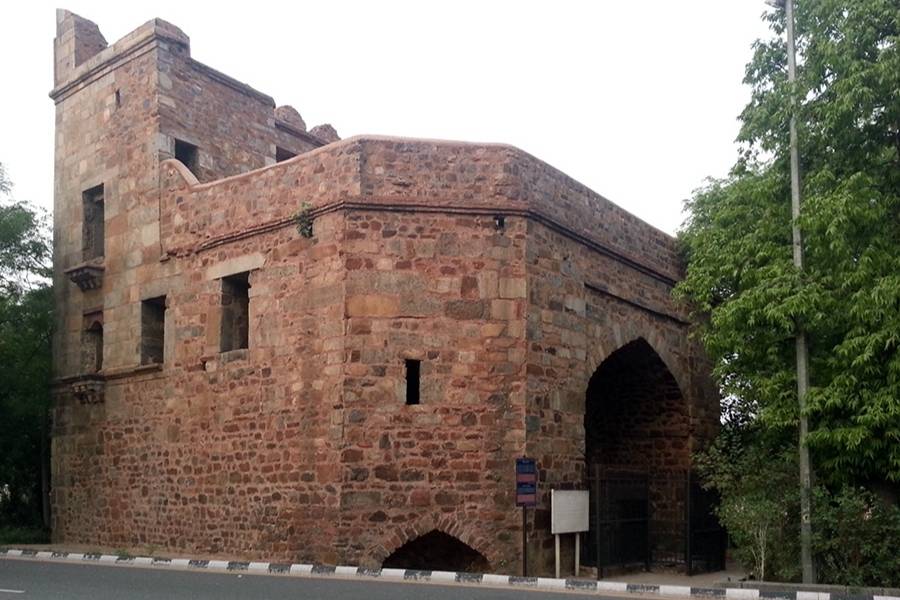
Built as part of fortifications for the Purana Qila, the two-storeyed gateway was possibly known as Kabuli Gate Wikimedia Commons
The Khooni Darwaza was one of several gateways built by Sher Shah Suri as part of fortifications around Purana Qila (Old Fort), the sixth city of Delhi. Each gate was named after the city it faced, and it is quite likely that the ‘bloody gate’ was the was once Kabuli Darwaza, as it faced the city of Kabul, and was the archway under which caravans from Afghanistan entered Purana Qila.
The execution of the Mughal princes
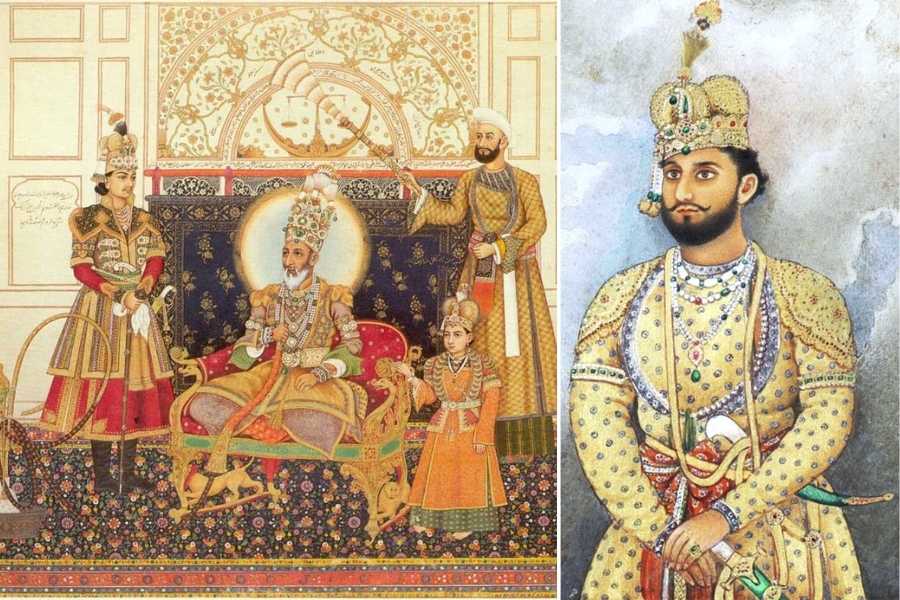
The cold-blooded execution of (right) Mirza Mughal, Mirza Khizr Sultan, and Mirza Abu Bakht, the sons and grandson of (left) Bahadur Shah Zafar II gave the monument its moniker of Khooni Darwaza Wikimedia Commons
The incident that gained the monument its moniker happened on September 22, 1857. Three Mughal princes Mirza Mughal, Mirza Khizr Sultan, and Mirza Abu Bakht — the fifth and ninth sons, and the grandson of Bahadur Shah Zafar II — were shot dead at point-blank range by Major William Hodson in front of this gateway. The three princes mutineers in the Great Revolt of 1857. The incident also finds mention in historian and writer William Dalrymple’s book The Last Mughal: “…close to the walls of Delhi, and near an archway known ever after as the Khuni Darwaza, or Bloody Gate… Stopping the cart, he (William Hodson) ordered the princes to get out, and strip naked. Then taking a Colt revolver, he shot them dead, in cold blood and at point blank range, one after another.”
A bloody history
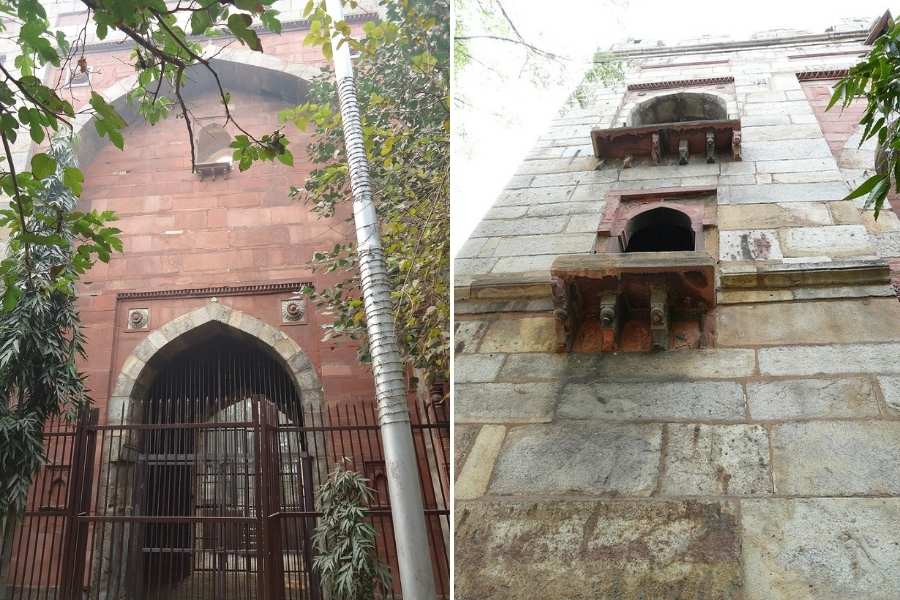
A history of bloodshed and violence has been the legacy of Khooni Darwaza Wikimedia Commons
Although the gate came to be known as Khooni Darwaza after the execution of the Mughal princes, the gateway has a long history of violence.
According to legend, even during the time of Sher Shah Suri the gate was used as an execution chamber, and the severed of the perpetrators were displayed at the Khooni Darwaza as a warning to the general populace.
Mughal general and poet Abdul Rahim Khan-i-Khanan — one of the navaratnas of Akbar’s court — was against Jehangir’s accession to the throne. After his father’s death, Jehangir took revenge by stripping Abdul Rahim of his powers and murdering his two sons. The Mughal emperor then left their bodies at the infamous Khooni Darwaza.
The bloody legacy continued in later generations when Aurangzeb beheaded his brother Dara Shukoh and displayed his severed head at the gate in 1659.
A legacy of violence
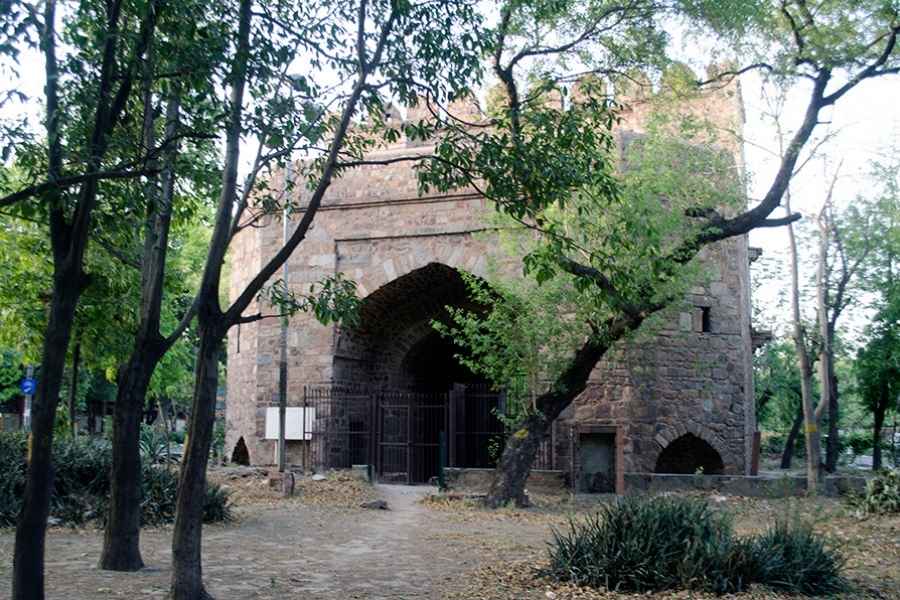
The entry to the staircases leading up to the upper levels of the gate remain locked since 2002 Rangan Datta
Long after the reign of the Mughals, the bloodshed continued at Khooni Darwaza during the riots at the time of Partition, when a group of refugees heading towards a camp in Purana Qila were massacred near the gateway.
Even in independent India, the curse of the Khooni Darwaza continued when in 2002, a fourth-year student of Maulana Azad Medical College was brutally raped inside the Khooni Darwaza. Following the incident, the entries to the staircases leading inside the gate were locked permanently preventing anyone from venturing into the interiors of this historical gateway with a bloody past.


